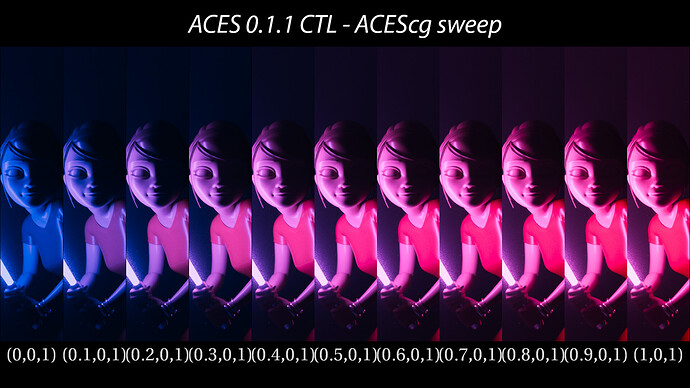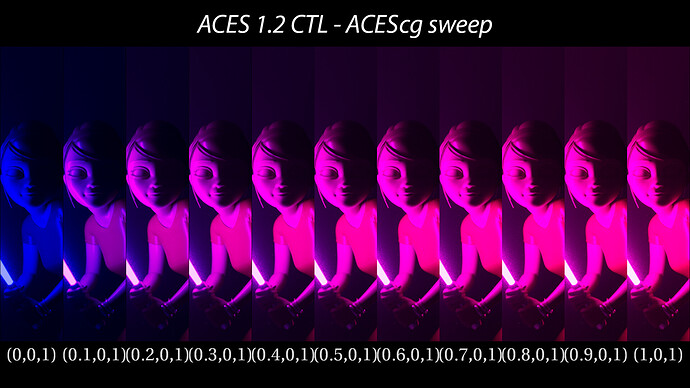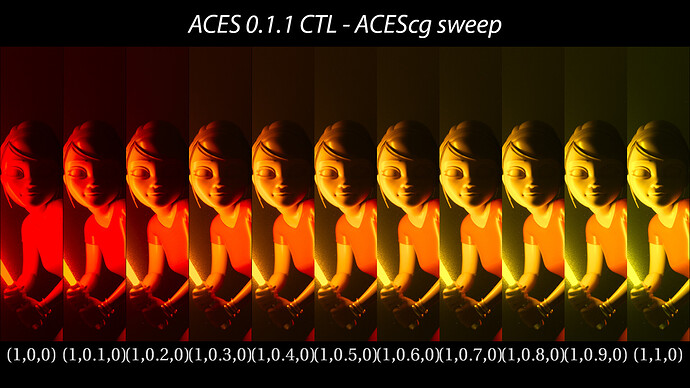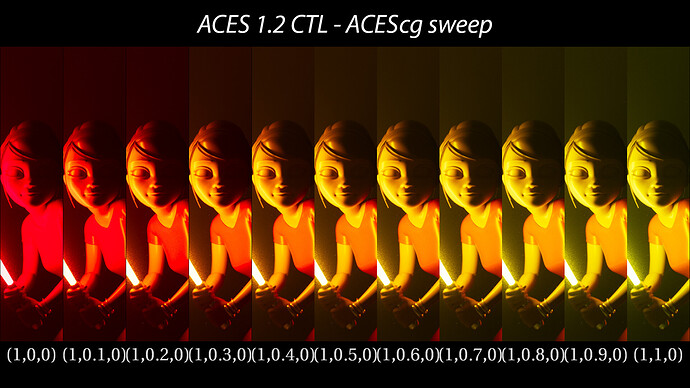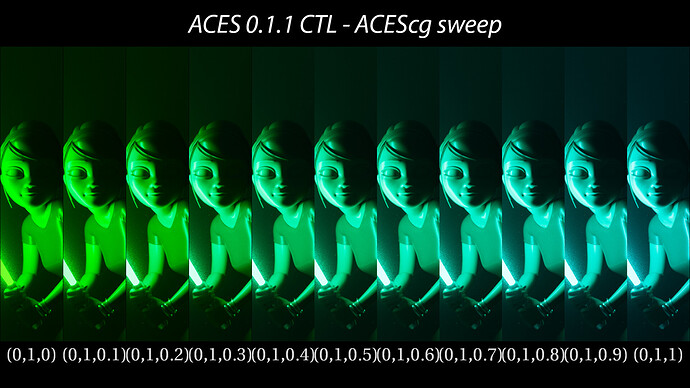Thanks Nick. Yeah I agree on the Colorfront examples. I was quite pleased with the faces indeed. I remember that @llamafilm (who kindly did the tests on these images) told me that he used the default settings for the LMT generation. It would be interesting to see if tweaking some of these parameters would allow for better light sabers.
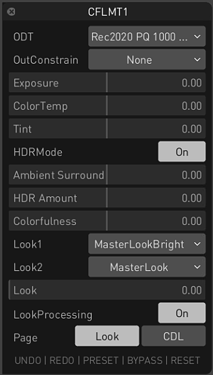
This also makes me wonder if these light sabers tests are actually valid. It would be worth debating if :
- Using ACEScg primaries for lighting is a reasonable choice.
- And if ACEScg primaries should go to white when overexposed.
I don’t have the answers to these questions unfortunately. I have always thought as ACES as an ecosystem and that having access to these ACEScg values for lighting/rendering should create a pleasing render, no matter what the exposure.
After Meeting#4, I thought it would be interesting to test ACES 0.1.1 out of curiosity (since the first Lego Movie was done with this version) and I have to say I was indeed quite pleased with some of the results.
I have done these sweeps of my light sabers (from blue to purple in ACEScg) :
From red to yellow in ACESg :
From green to cyan in ACESg :
I am not sure if this helpful and I am certainly not saying we should go back to 0.1.1… It probably got discarded for valid reasons, such as complexity and lack of invertibility. Which got me thinking about design requirements and how complex it is to come with a proper list (other than it should look good).
Following a quick conversation on rocket chat, I thought I’d start a list here, just to gather some thoughts (all credit is due to @Thomas_Mansencal and @sdyer ) :
- invertibility (since it has come up again and again as a problem with v1.x)
- easy to work with, i.e. no strong look
- easy to extend, i.e. good framework (targeting new displays should be easy for examples)
- simple, fast, performant and invertible by a closed form
I have always thought the main goal for the Output Transform would be to do a kick-ass transform to be honest, with some perceptual gamut mapping (if that means anything). As you are all aware, gamut clipping and hue skews are my main concerns. But I agree this is probably a very limited and narrow point-of-view from a lighting artist.
In the end, I always come back to these Colorfront questions that really intrigued me (some of them are not necessarily related to output transforms but rather color pipelines in general) :
- Does it support the common master workflow ?
- Does it handle both SDR to HDR, and HDR to SDR ?
- Does it support camera original and graded sources ?
- Is it based on LUTs created with creative grading tools ?
- Do they break with images pushing the color boundaries ?
- Does it support various input and output nit levels ?
- Does it support different output color spaces with gamut constraints ?
- Does it support various ambient surround conditions ?
- Will SDR look the same as HDR? Is the look of the image maintained ?
Regards,
Chris
